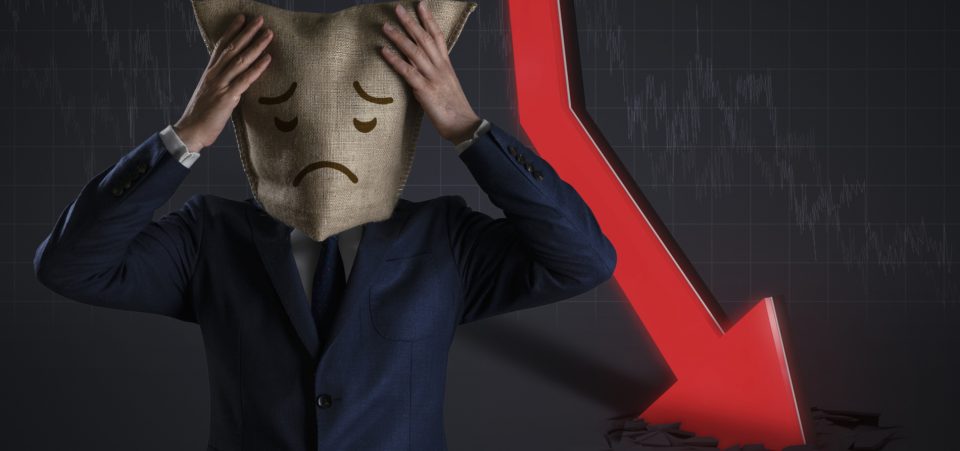Good Times Are Heading for an Abrupt End and a Stock Market Crash Is Overdue
It seems that optimism has prevailed. The bull market continues and the Dow has even flirted with its own record, closing in at almost 26,000 points. But how long can the good times roll until the inevitable stock market crash occurs?
Investors are spoiled for choice when it comes to the potential triggers for the next stock market crash. The midterm elections in November come to my mind as a particularly insidious episode, filled with “black swan” possibilities.
And then there’s the traditional belief that September has typically been a bad month for the markets. Such expectations tend to be self-fulfilling (which explains the popularity of technical analysis).
Many investors may stay away from the markets or feign a bearish attitude in order to avoid having to test that theory. Indeed, it’s less “theoretical” than one would expect.
Consider that on September 4, the day after Labor Day, the volatility index (VIX) rose almost 10%. (Source: “Volatility jumps to kick off September, typically the toughest month for stocks,” CNBC, September 4, 2018.)
Add to that the fascinating quirk of pre-midterm elections, and September tends to produce even worse S&P performances.
There Is No Typical Market Behavior
Still, this time, in September 2018, nobody can afford to be complacent. It would be unwise to simply attribute any potential losses and the rising VIX to simple tradition or typical market behavior.
There’s an eerie air about the next few months. The stock market may not recover or bounce back from whatever losses it experiences. This may be a symptom of a much bigger malaise and a much more dramatic stock market crash.
Therefore, for this September, any oscillation from the bullish trends of August calls for caution. It’s a time when being realistic, even pessimistic, might help protect your savings.
Wall Street’s tax cut- and stock buyback-fueled rally since December 2017 has isolated it from reality. Rather, pitfalls and warning signs are surrounding the financial cocoon that Wall Street has become.
The situation has become ideal for an unexpected bolt from out of the blue, triggering a financial storm.
Argentina has become nothing less than the epicenter of an emerging market crisis.
The rising U.S. dollar, after years of quantitative easing, has proven to be difficult to adapt to. The shockwaves from Buenos Aires have quickly reached Brazil and Turkey, pushing on toward South Africa, Indonesia, and India.
And That’s Not Counting Iran and Russia
Simply put, economic collapse in emerging markets has begun. And the epicenter of the storm happens to be Washington D.C. Two factors are gathering the dark clouds. One is the rising dollar. The other is President Donald Trump’s trade tariffs.
The dollar has become the main magnet for international investors, while a tariff war between the United States and China has triggered reasonable concerns that international trade will slow down, further damaging emerging economies.
Therefore, it’s worth asking just how long Wall Street can keep driving up valuations—and on what mysterious basis, to boot. Even investors’ Teflon-like exuberance will wear out.
After Apple Inc. (NASDAQ:AAPL) achieved the astronomic $1.0-trillion market cap just a few months ago, Amazon.com, Inc. (NASDAQ:AMZN) joined it on September 4, achieving the lofty target itself.
But where will Amazon end up when so many of its products—imported from China and other emerging markets—start costing 20% to 30% more because of tariffs? It’s not as if the United States can suddenly replace them using domestic manufacturers.
For that matter, how will Apple be able to maintain its profitability if the cost of “iPhones” and other hardware (its bread and butter) becomes far less affordable?
How Can Any Sectors Survive the Next Stock Market Crash?
There are few stocks that can survive this scenario. They are the ones related to companies that face limited market competition and tend to improve their market performance as overall risks intensify.
I’m talking about defense stocks, of course. In fact, apart from the emerging market crisis closing in around America, there are dramatic geopolitical scenarios all but confirming defense stocks’ role as a hedge against the looming stock market crash.
Investors, who have yet to appreciate the taste of sleepless nights (and who are interested in keeping things thus), should start to notice and heed the pessimism that has been circling Wall Street over the past few days.
The world has become a scarier place in 2018 and it appears to be heading for worse in 2019.
The world is looking bleaker. As we enter the last quarter of the year, geopolitics between powers and superpowers are dense with rumors of unpredictability, wars, and socioeconomic breakdowns.
It would not be an exaggeration to suggest that the entire post-Cold War order has come under threat. Chaos may soon prevail. (Source: “‘A World in Disarray’ Is a Calm Look at a Chaotic Global Order,” The New York Times, February 13, 2017.)
American-Dominated Globalization Is Ending
In such a scenario, a sudden stock market crash may be the least troublesome event. The world is simply changing. Since 1990 or 1991, when the Soviet Union collapsed, the United States has been able to impose its own stamp on globalization.
In many ways, globalization has been “Americanization.” But the Trump presidency, for better or worse, has set Washington on a more isolationist course just as new superpowers (China) are emerging and old ones (Russia) are resurging.
Such shifts of power and influence don’t go unnoticed. They force change, often abrupt change, which few are prepared to sustain, let alone manage.
Moreover, taking an isolationist turn after more than two decades of intense expansionism generates tension.
As the dominant power retreats, various states and players struggle to gain a bigger piece of whatever influence, territory, or economic advantage that’s left.
Isolationism, therefore, does not imply the U.S. will be able to avoid more conflicts.
So long as the U.S. can sustain the influence of the dollar—that is, ensure that the world continues to buy commodities from oil to potash in U.S. dollars—it will also sustain its massive public debt.
In turn, it will be able to afford its massive military-industrial complex.
On the contrary, if new competing currencies of influence should emerge, such as the petro-yuan, then even defense stocks may start to falter.
Washington will no longer be able to afford the enormous costs of its military hardware.
In this context, the day of financial reckoning approaches. How can anything stop the next stock market crash at this point?
America has, in fact, had too much of a good time lately, as far as share prices are concerned. You can gather just how good, noting that all major market indicators and indices have dropped since the start of 2018. Without tax cuts, stocks would have fallen already.
A stock market crash, therefore, might be long overdue.






